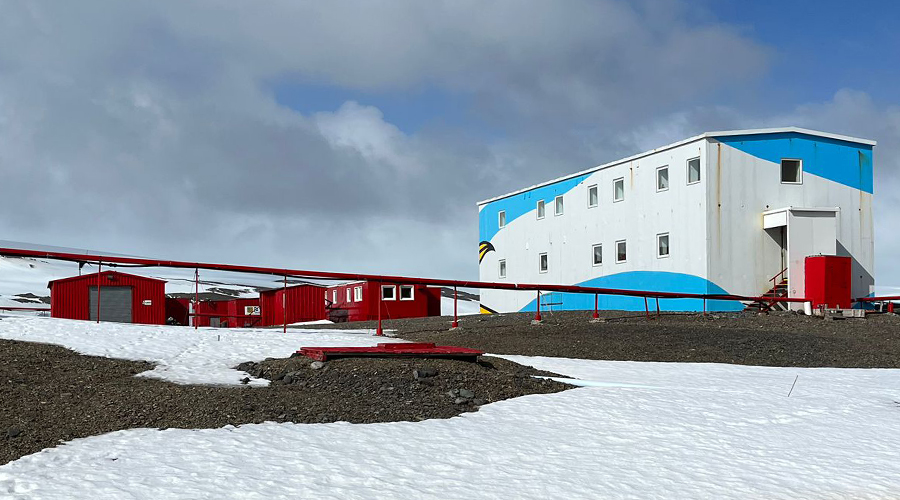Breaking the Ice: The First Raspberry Shake in Antarctica
March XX, 2025 – by Enrique Latorres and Leda Sánchez. http://ogu.fcien.edu.uy

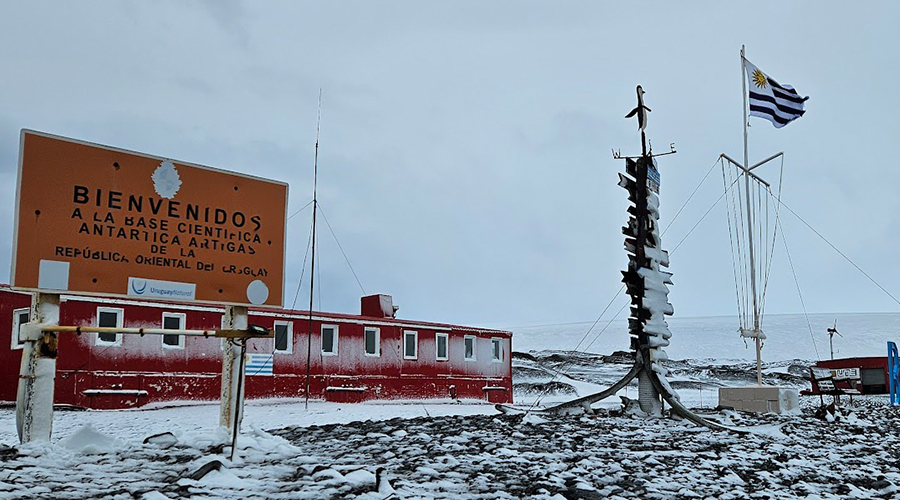
In 2020, the first Raspberry Shake seismograph was installed at Base Artigas, Uruguay’s permanent station in Antarctica. Despite some challenges, it continues to collect valuable seismic data, and we look forward to expanding the network in the future.
Uruguay’s Presence in Antarctica
The Base Científica Antártica Artigas (BCAA) is Uruguay’s permanent base in Antarctica. It was founded on 22 December 1984 on King George Island (also called “25 de Mayo”) in the South Shetland Islands. It is commonly referred to as ‘Base Artigas’. It depends on the Uruguayan Antarctic Institute (IAU) and is about 4.4 km from the Russian and Chilean bases and 6.8 km from the Chinese base.
Uruguay also has a small base on the continent. The Estación Científica Antártica Ruperto Elichiribehety (ECARE) is Uruguay’s summer research base, established on 22 December 1997 by the IAU on the Antarctic Peninsula. It is open during the Antarctic summer, so it does not have permanent staff all year round.
The IAU reports to the Ministry of National Defense (Uruguay) and is in charge of programming and developing Antarctic scientific, technological, and logistic activities to establish the National Antarctic Program (PNA). The services are supported by technicians and personnel from the Uruguayan Armed Forces (Army, Navy, and Air Force) and civilian personnel.
The BCAA has year-round military personnel, and during the austral summer season (from the end of November to the end of February), several scientists from different universities come to conduct research in various areas.
The base has had very good data connectivity for a long time. An agreement with Venezuela allowed us to have a satellite transponder available for Uruguayan use. Combined with the Manga Earth Station of ANTEL (state telephone company), it provided telephone and data connectivity to the base.
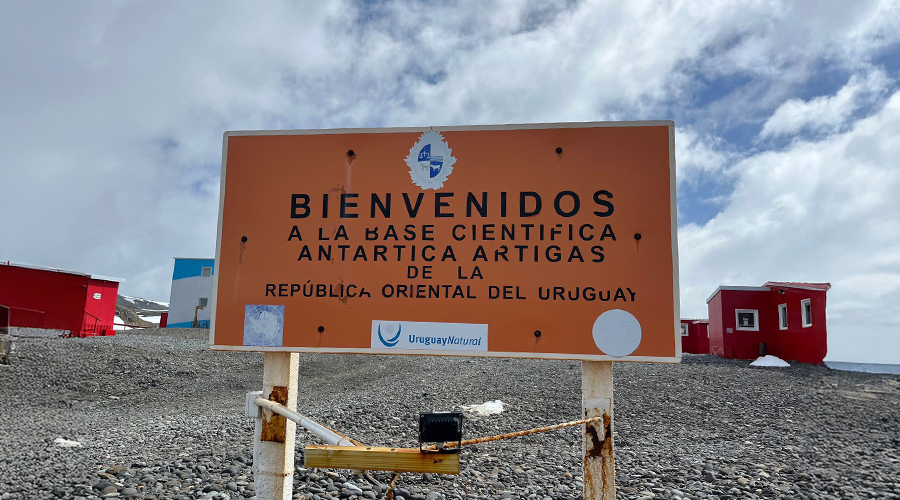
Installing the Raspberry Shake at Base Artigas
In the austral summer of 2020, we installed the first Raspberry Shake in Antarctica.
On January 23, 2020, at 14:45 UTC, we started receiving data in Montevideo from the station. The seismograph was originally installed inside one of the buildings dedicated to scientific laboratories. It remained operational until the Venesat-1 incident on March 13, 2020.
The IAU explored alternative ways to transmit data, leading to a contract with Intelsat, which was significantly more expensive and provided lower bandwidth.
The return of communications occurred on August 8, 2020, just in time to record the seismic swarm that occurred from August 26, 2020, through June 30, 2021.
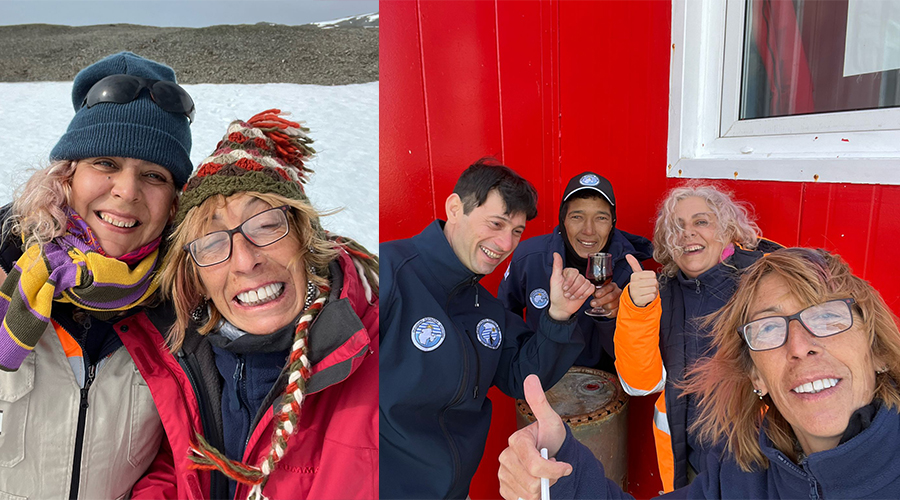
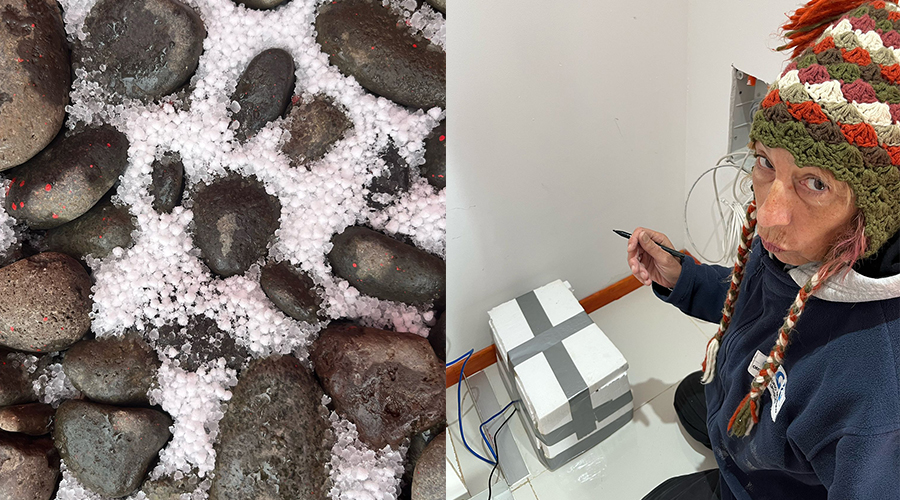
The available bandwidth was expanded with the installation of a Starlink array. These links allow comfortable bandwidth for internet and cellular connectivity in the base environment provided by the state-owned telecommunications company. But the equipment suffered other interruptions. These were due to difficulties with the care of the equipment sharing space with scientists from other areas. Some of these did not understand the value of the equipment. In addition, being in a shared area with people moving around caused it to register unwanted noise. For example, the space was recovered during the campaign from November 29 to December 13, 2023, and the equipment was reoriented. However, similar problems recurred later on.
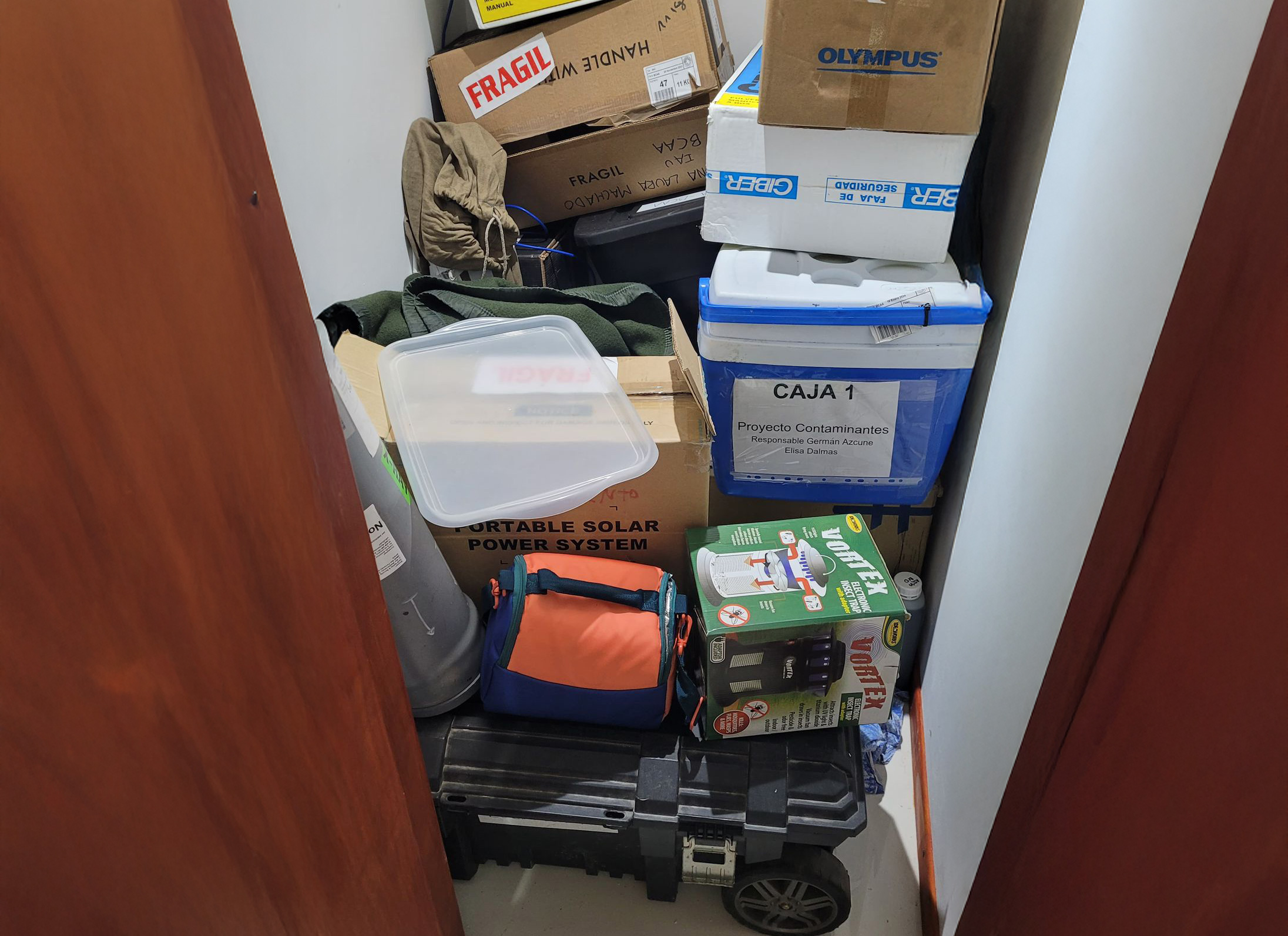
Challenges and Improvements
This led us to propose building a dedicated vault for the seismograph, a project made possible with the support of the BCAA military personnel.
We made a preliminary design of the vault that was adapted by the base personnel. The vault’s location changed several times to accommodate other planned scientific and service equipment installations in the area.
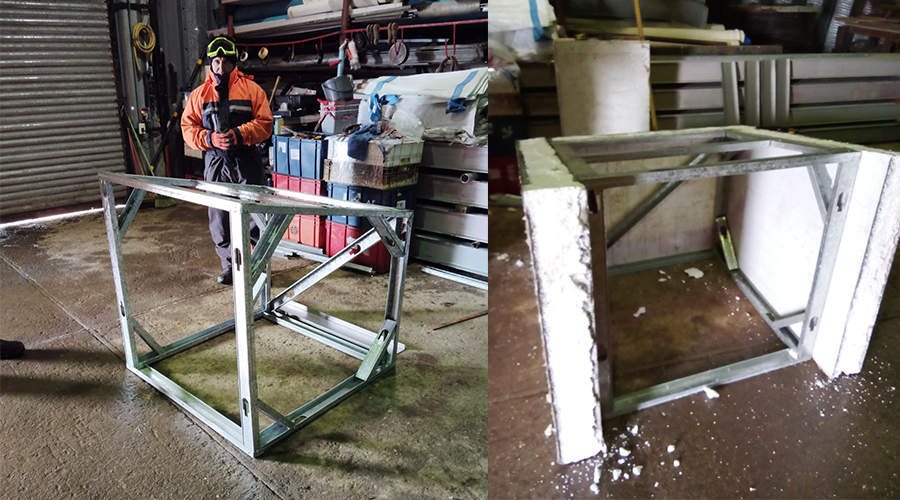
It is a simple but resistant design based on a Steel Frame and covered with sandwich panels for the exterior on a reinforced concrete slab.
The photographs document the construction process. The vault is located near the base’s telecommunications center, with electricity and data supplied through an underground duct.
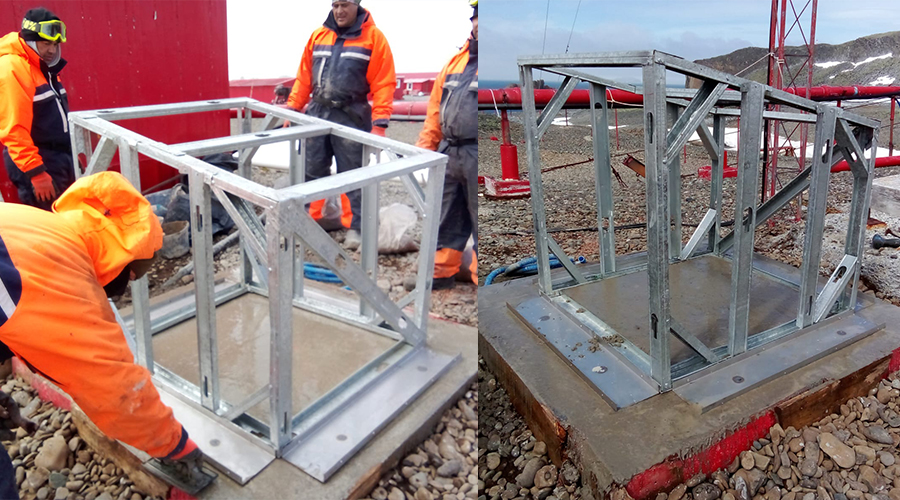
The equipment was oriented to the geographic south. Yes, that’s right. The arrow on the Raspberry Shake should point north, but there, it is easier to align with the geographic south with the arrow pointing the other way. Calcium chloride flakes were added for dehumidification. A Uruguayan-made panel heater was added to keep the station from reaching excessively low temperatures in the harsh southern winter. The door was closed and sealed with silicone.
This station then connects to the ShakeNet services directly through the Artigas Base data network.
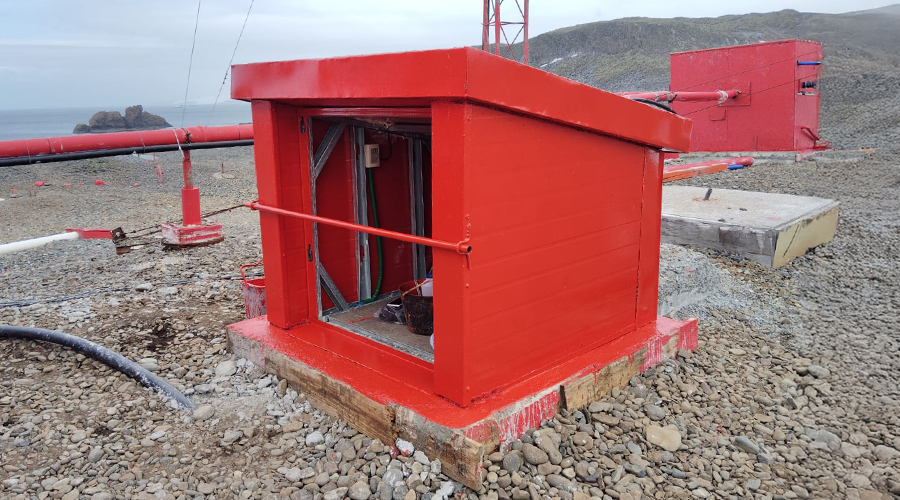
But unfortunately, we have no way to manage the equipment remotely, and it also shares the broadcast domain with the rest of the Base.
In the near future, the state telephone company will install an antenna to provide LTE G4 connectivity for cell phones near the Artigas Base. We plan to install one of the LTE routers we have in the network next year. The telephone company provides us with an MPLS-VPN network within ANTEL’s cellular phone network and connects our routers and sensors with the servers in the private cloud of the Uruguayan Government Agency AGESIC (Agency of Electronic Government and for Information and Knowledge Society). This will allow us to manage the Raspberry Shake from our facilities, in addition to separating the equipment and its data from the data network of the Artigas Base. The seedlink data will go to the servers in the AGESIC of the Presidency of the Republic to accumulate the data from the sensors, from where we clone the information to process the events. Also, data will be freely available through the ShakeNet network as usual. The system is within the RED.UY is the internal data network of the Uruguayan government agencies. In the datacenter of the Faculty of Sciences (FCien), of the University of the Republic (UdelaR – State), we have a server that connects through the RED.UY to the server in AGESIC, replicating the data for easier access to researchers. The services of the AGESIC and FCien datacenters allow us to free up resources by not having to maintain such a complex and costly infrastructure.
Another future plan is to take advantage of the size of the vault to add other kinds of geophysical sensors for new lines of research.
The Raspberry Shake station at Artigas Base (now R4DE2) is the first of its kind in Antarctica to operate continuously. It is one of two that are now in operation year-round in Antarctica. The other one is the Princess Elisabeth Antarctica Research Station of Belgium (today RE31F).

Expanding the Network and Future Plans
There are plans and proposals to set up other stations in the near future in collaboration with organizations in other countries. Some proposals involve highly promising locations, but power supply and maintenance remain major challenges. We will need to develop an automated power system and a facility capable of withstanding Antartica’s extreme conditions. We will learn a lot from this setup.
One thing we’ve asked the Raspberry Shake engineers several times is to develop an interface to connect them to 12-volt power so that we can power them with solar panels, small wind systems, or other solutions for unserved areas. We are still designing our solution.
And we hope to grow our network in several Raspberry Shake units, both within the country and in collaboration with other countries.
During this season, we also installed sensors to measure underground temperatures, aiming to record daily and yearly temperature variations within the first meter of depth. This data, together with meteorological data, will help analyze several aspects of temperature variation in Antarctica and how it affects the terrain. Base Personnel helped us to bury in the ground the tubes that contain the spaced sensors. We will download data next year if possible. The sensors can register every 30 minutes for two years with their batteries.
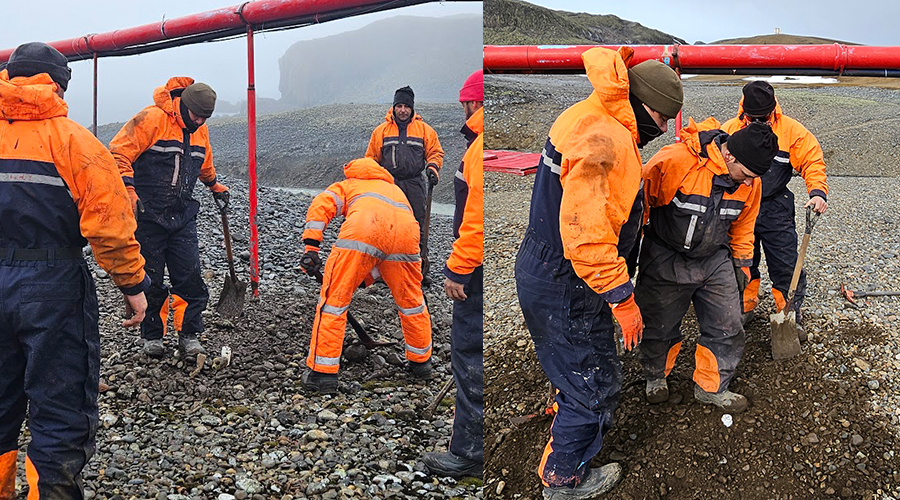
Acknowledging Base Artigas Personnel
We are deeply thankful to the personnel of Base Artigas for their help and support in our activities. The following are the names of this season’s staff:
Staff ANTARKOS XLI
| TTE. CNEL. PETRA DA COSTA | E.N. Base Chief. |
| ALF.(N) ILDA MORALES | E.N. |
| SOM OSCAR ROMERO | E.N. |
| SUP. AT. OSCAR COITIÑO | FAU |
| AT. PPAL. GABRIEL SALDIVIA | FAU |
| SOP (MAR) LUIS RODRIGUEZ | A.N. |
| SOP (ELE) WASHINGTON ROMAN | A.N. |
| SGTO. HEBERT FLEITAS | E.N. |
| SOS (MAR) ADAN NUÑEZ | A.N. |
| CS(CC) MAXIMILIAN GÓMEZ | A.N. |
| SDO 1° (M) EMILIANO TAÑO | E.N. |
| MP (MAR) ARNOLD MORALES | A.N. |
| SDO 1° CARMEN DA SILVA | E.N. |
Work Team
| CC (CIME) FÉLIX MORENO | A.N. |
| SOP (MOT) WILSON PEREIRA | A.N. |
| SOP (ELE) JUAN OLIVERA | A.N. |
| SOP (MOT) OSCAR PÉREZ | A.N. |
| CP (MAR) CHRISTIAN MARCONI | A.N. |
| CS (MOT) RUBÉN COSTA | A.N. |
| CS (IM) MARIO AMARO | A.N. |
| CS (IM) EDUARDO MOREIRA | A.N. |
| CS (IM) JAIME RODRÍGUEZ | A.N. |
E.N. – Ejército Nacional – National Army.
A.N – Armada Nacional – National Navy
FAU – Fuerza Aérea Uruguaya – Uruguayan Air Force.
